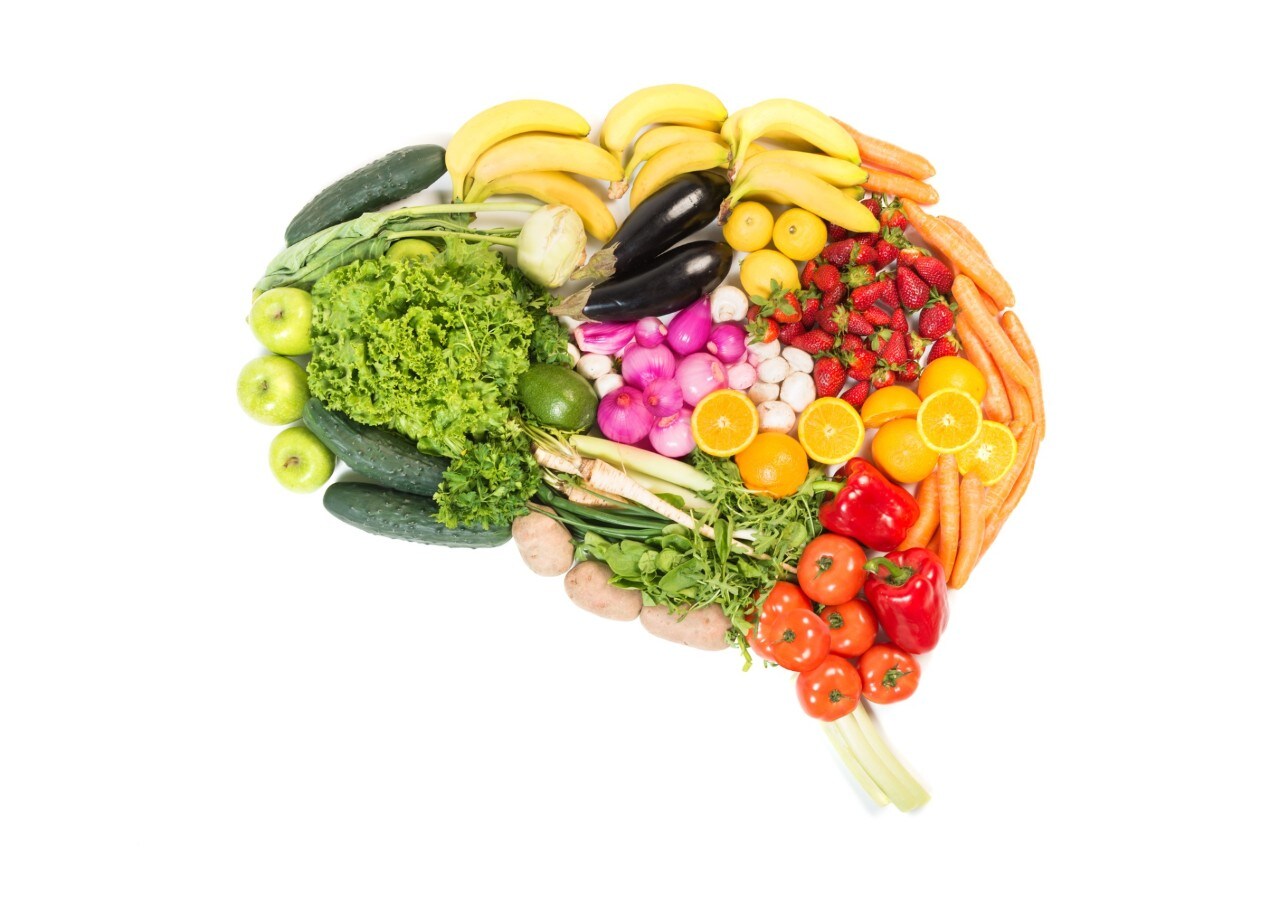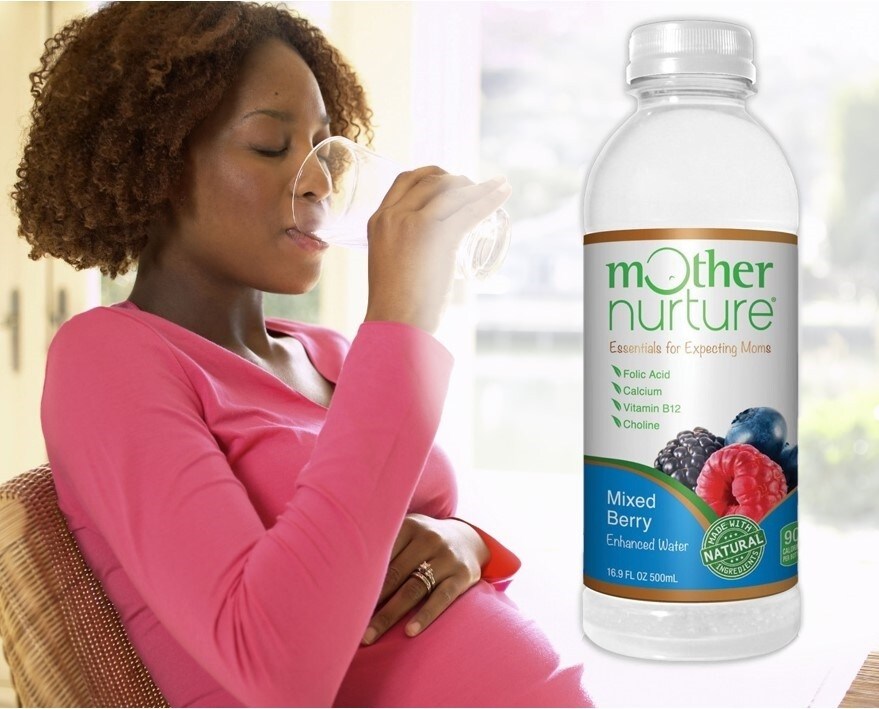
想让晚年生活充满活力?想永葆青春、感觉良好、终生思路清晰?好消息。我们有充分理由相信,可以将衰老过程延缓数十年,并在此期间保持良好的面貌、思维和感觉。
现在已经证实,大多数与衰老有关的疾病和功能障碍都源于生活方式。(40,44)简言之,岁月并不是导致衰退的唯一因素,我们选择如何生活也很重要。如果我们愿意在饮食以及营养补充和生活方式方面做出改变,就可以最大限度地延长健康的中年生活时间,推迟甚至避免衰弱的老年生活。(1,11,14,15,24)
衰老是一个连续的过程,而非突发事件。您不会在某一天早上醒来突然发现自己老了。从心脏病到皮肤衰老等与老年人相关的相同营养问题,自中年时期就已经开始。与饮食有关的健康问题只会随着年龄增加。例如,维生素D和B12是人体随年龄增长而需要补充的营养素。皮肤暴露在阳光下时,人体会产生维生素D,但随着年龄增长,这种能力会逐渐消失。(51,52)这意味着,随着年龄增长,维生素D的食物和补充来源变得越来越重要。(2)此外,随着年龄增长,维生素B12的需求也日益增加,而许多老年人缺乏这种维生素。(23,33)。再比如,晚年健康需要增加的营养素还包括钙和维生素B6。(50,53)
越早开始预防衰老的饮食越好,但无论何时开始都不晚。计划很简单,只需谨记五个简单的诀窍:
您能采取的减缓、停止、甚至扭转衰老过程的最重要的饮食习惯,是增加抗氧化和富含纤维食物的摄入量,特别是各色水果和蔬菜的摄入量。(5,6,10,34,37)从心脏病到白内障和皱纹等所有与年龄相关的疾病,其一个根本原因是名为氧化剂或自由基的氧碎片。如果不加抑制,这些氧化剂会损伤细胞和组织,并会随年龄而加剧。(49)幸运的是,人体有一种名为抗氧化剂的抗自由基系统,它能使具有破坏力的氧化剂失活并排出体外。(45,46)
其中许多抗氧化剂来自我们的饮食。例如,维生素C有助于产生正常胶原蛋白,即皮肤底层支撑结构。日光照射也会消耗皮肤中的维生素E,而增加这种抗氧化剂的摄入量有助于保护细胞免受氧化应激。(38)研究表明,维生素E还可以减少胶原酶产量,避免胶原蛋白遭分解,导致皮肤下垂和皱纹,从而减缓皮肤细胞衰老。(47)
在饮食中添加深色水果蔬菜,增加抗氧化剂储备。深绿叶菜尤其富含抗氧化剂,也是叶酸和维生素K的良好来源,有利于脑健康。(30)饮食中富含水果蔬菜,可以让您的面貌和心态更显年轻,也让您能更轻松地控制腰围!(48,54)
有些脂肪(饱和脂肪和反式脂肪)似乎会加速衰老过程。应该减少这些食物(如红肉、高脂肪乳制品和氢化植物油制品)的摄入。(3,13,22,35)而使用健康脂肪(如特级初榨橄榄油中的单不饱和脂肪和鱼中的欧米茄-3脂肪)代替之。欧米茄-3脂肪DHA对心脏健康和保持正常视力尤为重要。(12,16)它可能还有助于保持思维敏捷。(27,28,29,32,33)每周饮食中含有两份或以上脂质鱼(如鲑鱼),或者服用DHA补充剂。
摆脱腰间赘肉和戒烟一样,是将健康的中年时期延至70岁及以上的主要方法之一。遵循一个简单的规则,就可以做到减肥:减少加工食品和快餐,专注于真正的食物。加工食品不仅会使人发胖,而且会加速衰老过程。此外,当饮食以原始形态的食物(例如,燕麦片而非格兰诺拉麦片、土豆而非法式炸薯条、100%全麦面包而非白面包、玉米棒而非玉米片)为基础,就会减少热量摄入。(7,8,36,39,42,43)
始终先通过食物满足营养需求。但在饮食不够完美的日子里,应该通过一两种补充剂填补营养缺口。(21,41)诀窍是选择适当的补充剂。就质量而言,考虑以下事项:
第1步:选择范围广泛的多种维生素和矿物质补充剂。考虑包含维生素A、D、E、K、所有B族维生素(维生素B1、B2、B6、B12、烟酸和叶酸)和微量矿物质(铬、铜、铁、锰、硒和锌)的补充剂。
第2步:阅读标签上“每日营养摄入量”一列中的内容。考虑含多种维生素的补充剂,其可提供所有营养素每日营养摄入量的100%左右,但不超过300%。您需要“均衡”的补充剂,而不是含有一种营养素2%、一种营养素50%以及一种营养素600%的补充剂。维生素D是一个例外,它的摄入量可以超过每日营养摄入量。
第3步:在美国,考虑USP标志。美国药典(USP)是非政府标准制定机构。该质量标志意味着补充剂会在消化道内溶解,由纯粹的配料制成,营养素含量与标签说明一致。
第4步:完善您的补充剂。没有哪种日服一粒的多种维生素补充剂含有足够的钙和镁。需要考虑的其他补充剂包括有益视力的叶黄素和玉米黄素,有益心脏、视力和头脑的欧米茄-3 DHA。(17,18,19,20)
无可否认,必须锻炼。您需要做日常有氧活动(如健步走、慢跑、游泳或骑自行车)以燃烧脂肪并保持心脏和头脑状态良好,同时每周至少要做两次强化活动(举重)以保持肌肉现状,甚至只需在厨房里举举牛奶罐。(4,9,25,26,31)
最令人欣喜的是,人体是一个整体。保护心脏的饮食建议对大脑健康同样有益,并能令人容光焕发。务必要吃得好!
参考文献
1. Jacob M, Yee L, Diehr P, et al: Can a healthy lifestyle compress the disabled period in older adults? Journal of the American Geriatric Society 2016;64:1952-1961.
2. Schleicher R, Sternberg M, Lacher D, et al: The vitamin D status of the US population from 1988-2010 using standardized serum concentrations of 25-hydroxyvitamin D shows recent modest increases. American Journal of Clinical Nutrition 2016;July 6th.
3. Song M, Fung T, Hu F, et al: Association of animal and plant protein intake with all-cause and cause-specific mortality. JAMA Internal Medicine 2016; August 1st.
4. Merril D, Siddarth P, Raji C, et al: Modifiable risk factors and brain positron emission tomography measures of amyloid and tau in nondemented adults with memory complaints. American Journal of Geriatric Psychiatry 2016; August 17th.
5. Du H, Li L, Bennett D, et al: Fresh fruit consumption and major cardiovascular disease in China. New England Journal of Medicine 2016;374:1332-1343.
6. Buil-Cosiales P, Toledo E, Salas-Salvado J, et al: Association between dietary fibre intake and fruit, vegetable, or whole grain consumption and the risk of CVD. British Journal of Nutrition 2016; June 6:1-13.
7. Song M, Hu F, Wu K, et al: Trajectory of body shape in early and middle life and all cause and cause specific mortality. British Medical Journal 2016; May 4th.
8. Aune D, Sen A, Prasad M, et al: BMI and all cause mortality. British Medical Journal 2016; May 4th.
9. Kraschnewski J, Sciamanna C, Poger J, et al: Is strength training associated with mortality benefits? Preventive Medicine 2016; 87:121-127.
10. Gopinath B, Flood V, Kifley A, et al: Association between carbohydrate nutrition and successful aging over 10 years. Journal of Gerontology 2016;June 1st.
11. Hagan K, Chiuve S, Stampfer M, et al: Greater adherence to the Alternative Healthy Eating Index is associated with lower incidence of physical function impairment in the Nurses Health Study. Journal of Nutrition 2016;146:1341-1347.
12. DelGobbo L, Imamura F, Aslibekyan S, et al: Omega-3 polyunsaturated fatty acid biomarkers and coronary heart disease. JAMA Internal Medicine 2016;June 27th.
13. Wang D, Li Y, Chiuve S, et al: Association of specific dietary fats with total and cause-specific mortality. JAMA Internal Medicine 2016;July 5th.
14. Feigin V, Roth G, Naghavi M, et al: Global burden of stroke and risk factors in 188 countries, during 1990-2013. Lancet Neurology 2016;June 9th.
15. Loprinzi P, Branscum A, Hanks J, et al: Healthy lifestyle characteristics and their joint association with cardiovascular disease biomarkers in US adults. Mayo Clinic Proceedings 2016;91:432-442.
16. Marklund M, Leander K, Vikstrom M, et al: Polyunsaturated fat intake estimated by circulating biomarkers and risk of cardiovascular disease and all-cause mortality in a population-based cohort of 60-year-old men and women. Circulation 2016;132:586-594.
17. Silvan J, Requero M, de Pascual-Teresa S: A protective effect of anthocyanins and xanthophylls on UVB-induced damage in retinal pigment epithelial cells. Food & Function 2016; 7:1067-1076.
18. Alassane S, Binquet C, Cottet V, et al: Relationships of macular pigment optical density with plasma lutein, zeaxanthin, and diet in an elderly population. Investigative Ophthalmology and Vision Science 2016;57:1160-1167.
19. McCusker M, Durrani K, Payette M, et al: The role of vitamins, essential fatty acids, and antioxidants in age-related macular degeneration, dry eye syndrome, and cataracts. Clinical Dermatology 2016; 34:276-285.
20. Gatell-Tortajada J: Oral supplementation with a nutraceutical formulation containing omega-3 fatty acids, vitamins, minerals, and antioxidants in a large series of patients with dry eye symptoms. Clinical Intervention in Aging 2016;11:571-578.
21. Rautiainen S, Rist P, Glynn R, et al: Multivitamin use ant the risk of cardiovascular disease in men. The Journal of Nutrition 2016; 146:1235-1240.
22. Stefani E, Boffetta P, Ronco A, et al: Meat consumption, related nutrients, obesity and risk of prostate cancer. Asian Pacific Journal of Cancer Prevention 2016;17:1937-1945.
23. Pfisterer K, Sharratt M, Heckman G, et al: Vitamin B12 status in older adults living in Ontario long-term care homes. Applied Physiology, Nutrition, and Metabolism 2016; January 19th.
24. Gardener H, Wright C, Dong C, et al: Ideal cardiovascular health and cognitive aging in Northern Manhattan Study. Journal of the American Heart Association 2016; March 16th.
25. Steffener J, Habeck C, O Shea D, et al: Differences between chronological and brain age are related to education and self-reported physical activity. Neurobiology and Aging 2016; 40:138-144.
26. Raji C, Merrill D, Eyre H, et al: Longitudinal relationships between caloric expenditure and gray matter in the Cardiovascular Health Study. Journal of Alzheimer s Disease 2016: March 11th.
27. Morris M, Brockman J, Schneider J, et al: Association of seafood consumption, brain mercury level, and APOE e4 status with brain neuropathology in older adults. Journal of the American Medical Association 2016; 315:489-497.
28. Heras-Sandoval D, Pedrraza-Chaverri J, Perez-Rojas J: Role of docosahexaenoic acid in the modulation of glial cells in Alzheimer s disease. Journal of Neuroinflammation 2016; March 10th.
29. Nishihira J, Tokashiki T, Higashiuesato Y, et al: Associations between serum omega-3 fatty acid levels and cognitive functions among community-dwelling octogenarians in Okinawa, Japan. Journal of Alzheimers Disease 2016; February 16th.
30. Soutif-Veillon A, Ferland G, Rolland Y, et al: Increased dietary vitamin K intake is associated with less severe subjective memory complaint among older adults. Maturitas 2016; February 11th.
31. Schafer M, White T, Evans G, et al: Exercise prevents diet-induced cellular senescence in adipose tissue. Diabetes 2016; March 16th
32. Zhang Y, Chen J, Qiu J, et al: Intakes of fish and PUFAs and mild-to-severe cognitive impairment risks. American Journal of Clinical Nutrition 2015; December 30th.
33. Oulhaj A, Herneren F, Refsum H, et al: Omega-3 fatty acid status enhances the prevention of cognitive decline by B vitamins in mild cognitive impairment. Journal of Alzheimer s Disease 2016; January 6th.
34. Wu J, Cho E, Willett W, et al: Intakes of lutein, zeaxanthin, and other carotenoids and age-related macular degeneration during 2 decades of prospective follow-up. JAMA Ophthalmology 2015; October 8th.
35. Gu Y, Brickman A, Stern Y, et al: Mediterranean diet and brain structure in a multiethnic elderly cohort. Neurology 2015; October 21st.
36. Sahakyan k, Somers V, Rodriquez-Escudero J, et al: Normal-weight central obesity. Annals of Internal Medicine 2015; November 10th.
37. Bernstein P, Li B, Vachali P, et al: Lutein, zeaxanthin, and meso-zeaxanthin: The basic and clinical science underlying carotenoid-based nutritional interventions against ocular disease. Progress in Retinal and Eye Research 2015; November 2nd.
38. Montagnani M, Marzagalli M, Moretti R, et al: Vitamin E alpha tocotriene triggers endoplasmic reticulum stress-mediated apoptosis in human melanoma cells. Science Report 2016;July 27th.
39. Chuang Y, An Y, Bilget M, et al: Midlife adiposity predicts earlier onset of Alzheimer s dementia, neuropathology and presymptomatic cerebral amyloid accumulation. Molecular Psychiatry 2015; September 1st.
40. Xu W, Tan L, Wang H, et al: Meta-analysis of modifiable risk factors for Alzheimer s disease. Journal of Neurology, Neurosurgery & Psychiatry 2015;August 21, 2015.
41. Mohajeri M, Troesch B, Weber P: Inadequate supply of vitamins and DHA in elderly: Implications for brain aging and Alzheimer-type dementia. Nutrition 2015;31:261-275.
42. Huang T, Xu M, Lee A, et al: Consumption of whole grains and cereal fiber and total and cause-specific mortality. BMC Medicine 2015;13:59.
43. Berti V, Murray J, Davies M, et al: Nutrient patterns and brain biomarkers of Alzheimer s disease in cognitively normal individuals. Journal of Nutrition, Health & Aging 2015;19;:413-423.
44. Crous-Bou M, Fung T, Prescott J, et al: Mediterranean diet and telomere length in Nurses Health Study. British Medical Journal 2014;December 2nd.
45. Freitas-Simoes T, Ros E, Sala-Vila A: Nutrients, foods, dietary patterns and telomere length. Metabolism 2016; 65:406-415.
46. Kandola K, Bowman A, Birch-Machin M: Oxidative stress: A key emerging impact factor in health, ageing, lifestyle and aesthetics. International Journal of Cosmetic Science 2016;37:1-8.
47. Rimbach G, Minihane A, Majewicz J, et al: Regulation of cell signaling by vitamin E. Proceedings of the Nutrition Society 2002;61:415-425.
48. Schagen S, Zampeli V, Makrantonaki E, et al: Discovering the link between nutrition and skin aging. Dermatoendocrinology 2012;4:298-307.
49. Nomellini V, Gomez C, Kovacs E: Aging and impairment of innate immunity. Contributions to Microbiology 2008 15:188-205.
50. Gallagher J: Vitamin D and aging. Endocrinology and Metabolism Clinics in North America 2013;42:319-332.
51. Veldurthy V, Wei R, Oz, et al: Vitamin D, calcium homeostasis and aging. Bone Research 2016;October 18th.
52. Wacker M, Holick M: Sunlight and vitamin D. Dermatoendocrinology 2013;5:51-108.
53. Allen L: How common is vitamin B12 deficiency? American Journal of Clinical Nutrition 2009;89:693S-696S.
54. Astrup A: How to maintain a healthy body weight. International Journal of Vitamin and Nutrition Research 2006;76:208-215.


依照相关规定,食品生产商应在标签中列出维生素 D 的含量。因此,现在您可以了解到自己从食物中摄取了多少维生素 D,并且很有可能摄入不足。来看看克利夫兰医学中心的 Michael Roizen 博士对此有何看法。



Registered dietitian and accomplished author Elizabeth Somer shares how to protect your eyes from the sun and during screen time.




根据“YOU: Having a Baby”书中所述,如果您怀孕了,可能会和其他75%的孕妇一样,有过对甜、咸、酸或油煎食物渴求的经历。食物渴求是怀孕的正常反应。务必咨询保健医生在怀孕期间您需要多少卡路里的食物。

难道您不希望有一种快乐丸,在您感觉不好时能够提神,或者在您要对爱人恶语相向时能温暖您的心房吗?好吧,这不是药丸,它和厨房一样方便,能够达到理想的效果。因为吃(或不吃)的东西与您的感觉密切相关。
22 November 2016


依照相关规定,食品生产商应在标签中列出维生素 D 的含量。因此,现在您可以了解到自己从食物中摄取了多少维生素 D,并且很有可能摄入不足。来看看克利夫兰医学中心的 Michael Roizen 博士对此有何看法。 阅读更多。



Registered dietitian and accomplished author Elizabeth Somer shares how to protect your eyes from the sun and during screen time. 阅读更多。
